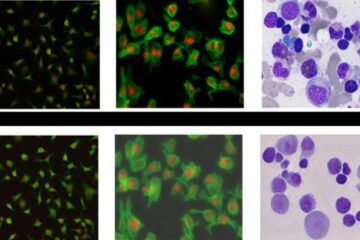Sunlight and serotonin underlie seasonal mood disorders

Authors of a research letter in this week’s issue of THE LANCET provide further evidence that the effect of sunlight on neurotransmitters in the brain plays a significant role in seasonal mood disorders.
The success of phototherapy (ultraviolet light therapy to stimulate brain neurotransmitter activity) and drugs that prevent the reuptake of the neurotransmitter serotonin have suggested that serotonin itself has a role in the development of seasonal depression. However, concentrations of serotonin and other neurotransmitters including dopamine and norepinephrine are normal in the cerebrospinal fluid of patients with seasonal affective disorder.
Gavin Lambert from the Baker Research Institute, Melbourne, Australia, and colleagues investigated whether measurement of serotonin concentrations from blood vessels draining the brain—a more accurate way of measuring serotonin concentrations in the brain than by analysis of cerebrospinal fluid—might provide stronger evidence for the role of serotonin in mood disorders. The investigators took blood samples from internal jugular veins in 101 healthy men to assess the relation between serotonin concentration and weather conditions and season.
The turnover of serotonin by the brain was lowest in winter, and the rate of production of serotonin by the brain was directly related to the prevailing duration of bright sunlight.
Gavin Lambert comments: “Our observations suggest that the prevailing amount of sunlight affects brain serotonergic activity, and thus underlies mood seasonality and seasonal affective disorder, although we do not know whether patients predisposed to affective disorders are affected by environmental factors in the same way as our healthy volunteers.”
Media Contact
All latest news from the category: Health and Medicine
This subject area encompasses research and studies in the field of human medicine.
Among the wide-ranging list of topics covered here are anesthesiology, anatomy, surgery, human genetics, hygiene and environmental medicine, internal medicine, neurology, pharmacology, physiology, urology and dental medicine.
Newest articles

Bringing bio-inspired robots to life
Nebraska researcher Eric Markvicka gets NSF CAREER Award to pursue manufacture of novel materials for soft robotics and stretchable electronics. Engineers are increasingly eager to develop robots that mimic the…

Bella moths use poison to attract mates
Scientists are closer to finding out how. Pyrrolizidine alkaloids are as bitter and toxic as they are hard to pronounce. They’re produced by several different types of plants and are…

AI tool creates ‘synthetic’ images of cells
…for enhanced microscopy analysis. Observing individual cells through microscopes can reveal a range of important cell biological phenomena that frequently play a role in human diseases, but the process of…





















